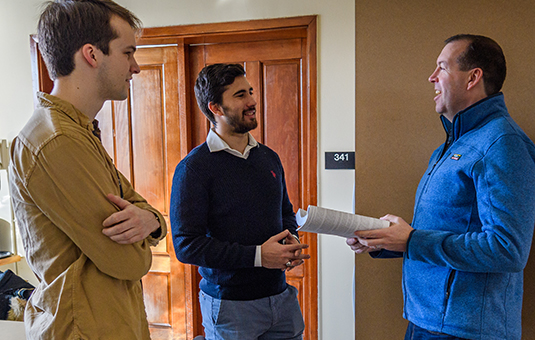Computer Science
Camera Mouse: Sound-Based Activation as a New Approach to Click Generation
Document Type
Conference Paper
Abstract
In the rapid development of HCI technology, mouse-replacement interfaces have innovated the user interaction experience with graphical user interfaces, specifically for those with neuromuscular diseases. By employing click actuation modalities that do not require a mouse for performing the tasks of pointing and clicking, the individuals are provided with a solution for effective interaction with computers. We present an alternative click actuation modality called “sound-click recognition” for the users of Camera Mouse, a mouse-replacement interface that tracks user motion. Using the sound-click recognition feature, users can generate a left click of the mouse based on the volume of the sound they generate. Furthermore, we present the findings of the evaluation of Camera Mouse while employing two input methods including sound-click recognition and dwell-time selection to analyze the user performance with each approach through side-by-side comparison. The metrics used to measure performance are generated by the GoFitts evaluation tool and are movement time(ms), throughput(bits/s), error rate (%), and target re-entries.
Publication Title
Lecture Notes in Computer Science (including subseries Lecture Notes in Artificial Intelligence and Lecture Notes in Bioinformatics)
Publication Date
2022
Volume
13521 LNCS
First Page
501
Last Page
509
ISSN
0302-9743
ISBN
9783031179013
DOI
10.1007/978-3-031-17902-0_35
Keywords
accessibility, click actuation, neuro-muscular diseases, sound recognition
Repository Citation
Pagan, Phoenix; Choi, Hanvit; and Magee, John, "Camera Mouse: Sound-Based Activation as a New Approach to Click Generation" (2022). Computer Science. 11.
https://commons.clarku.edu/faculty_computer_sciences/11
APA Citation
Pagan, P., Choi, H., & Magee, J. (2022, June). Camera Mouse: Sound-Based Activation as a New Approach to Click Generation. In International Conference on Human-Computer Interaction (pp. 501-509). Cham: Springer Nature Switzerland.



